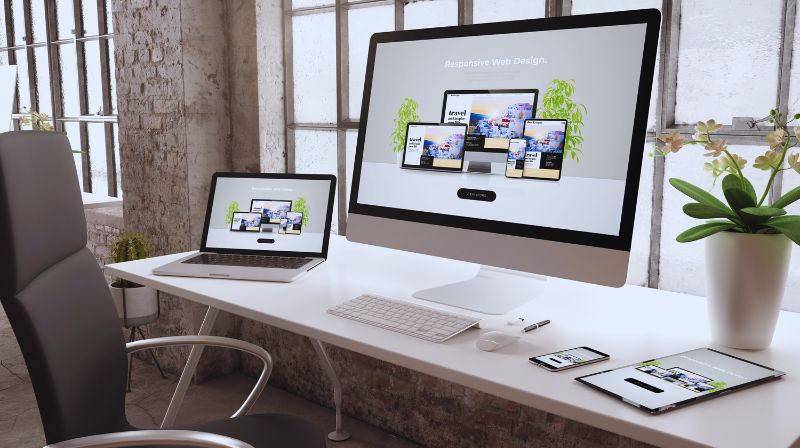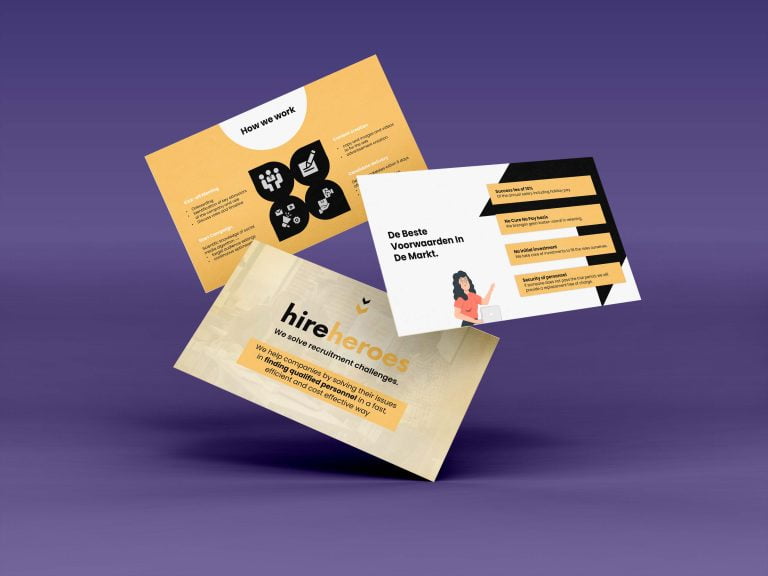We’ve all been there—standing in front of an audience, unsure of how to deliver our message in the best way possible to create a successful presentation. Choosing the right type of presentation can be tricky, especially when different topics and audiences demand different styles. It can be overwhelming to figure out which approach will make your presentation impactful and engaging.
The good news is that there are several types of presentation styles designed for different situations. Whether you’re informing, persuading, or motivating, knowing the right style for your content and audience can make all the difference.
If you want to discover which presentation style suits you best and how to make your next presentation unforgettable, keep reading below!

8 Different Types of Presentations Every Presenter Must Know
When it comes to delivering a presentation, one size does not fit all. There are different types of presentation styles that can be used, each with its own strengths and purposes. Whether you are looking to inform, persuade, or motivate, selecting the right presentation style is key to leaving a lasting impact on your audience. Below, we’ll explore 8 types of presentations every presenter should be familiar with, so you can choose the right one for your next talk.
1. Informative Presentation
An informative presentation is often enhanced by using effective PowerPoint presentation techniques. is all about delivering factual content in a clear and concise manner. This type of presentation style works well when your goal is to educate the audience, provide updates, or explain complex ideas. It’s commonly used in classrooms, during business reviews, or at conferences. If your audience needs to leave with a deeper understanding of the topic, this is the right style for you.
Objective: Present facts, data, and information clearly.
Best for: Educational settings, conferences, or briefings.
Example: A quarterly financial review.
2. Persuasive Presentation
A persuasive presentation is designed to influence the audience’s beliefs, opinions, or decisions. Whether you’re trying to win over potential clients, secure donations, or encourage policy changes, this presentation style focuses on strong arguments, clear evidence, and emotional appeal. Use it when your goal is to make your audience act or think differently.
Objective: Convince the audience to adopt a point of view or take action.
Best for: Sales pitches, political campaigns, and fundraising events.
Example: A presentation on why a company should adopt a new technology.
3. Demonstration or How-To Presentation
A demonstration presentation is a hands-on way of teaching your audience something new. It involves guiding them through the steps of a process or explaining how a product works. This style is highly effective when launching new products or conducting workshops, as it allows for an interactive presentation and an immediate understanding of the subject matter.
Objective: Show how something works step by step.
Best for: Product launches and training sessions.
Example: Demonstrating how to use new software.
4. Training or Instructional Presentation
The training presentation is designed to enhance the skills and knowledge of the audience. Commonly used in corporate environments for employee onboarding or professional development, this style breaks down complex tasks into digestible steps. It often includes interactive elements like Q&A sessions or hands-on practice to ensure the audience is not just listening but learning.
Objective: Educate the audience on specific skills or procedures.
Best for: Employee onboarding, workshops, and skill training.
Example: A workshop on improving customer service.
5. Sales Presentation
A sales presentation is all about convincing potential clients that your product or service is the best choice for them. This type of presentation usually includes demonstrations, case studies, and persuasive language to emphasize the benefits and features of the product. The goal is to move the audience from interest to action, which typically involves making a purchase or investment.
Objective: Highlight the benefits of a product or service to make a sale.
Best for: Client meetings, and product demonstrations.
Example: A presentation on the features of a new smartphone.
6. Pitch Presentation
A pitch presentation is a short, impactful presentation aimed at securing support, investment, or approval for a new idea or business proposal. It’s critical to keep it concise and engaging, usually focusing on the core benefits, market potential, and financial projections of your idea. In this style, clarity and persuasion are key to winning over your audience, often in a limited time frame.
Objective: Present a new idea, product, or business proposal to potential investors or stakeholders.
Best for: Startup pitch events, and business meetings.
Example: A startup pitching for seed funding.
7. Motivational or Inspirational Presentation
A motivational presentation aims to ignite passion and inspire change in the audience. Often used by keynote speakers or during leadership seminars, this style relies heavily on emotional appeal, personal stories, and powerful visuals. If your goal is to uplift and encourage your audience to pursue their goals or overcome challenges, this is the presentation type to choose.
Objective: Encourage and inspire the audience to take action or change behavior.
Best for: Keynote speeches and motivational seminars.
Example: A motivational speech on overcoming obstacles.
8. Status or Progress Report Presentation
A status presentation is perfect for keeping teams and stakeholders informed about the progress of a project or initiative. These presentations are typically used in project management to highlight milestones, address challenges, and discuss next steps. The focus is on transparency and ensuring everyone involved has a clear understanding of where the project stands and what needs to be done moving forward.
Objective: Provide updates on the progress of a project or initiative.
Best for: Team meetings, and project reviews.
Example: A project update on the development of a new product.
These 8 different types of presentations serve various purposes and can be tailored to your specific goals and audience needs. Whether you’re looking to inform, persuade, or inspire, choosing the right presentation style will make your message more effective and leave a lasting impression.
How Do I Choose the Right Type of Presentation for My Topic or Audience?
Selecting the right type of presentation is key to delivering a powerful and engaging message. Different presentations work better in different settings, and understanding your goals, audience, and content will help you choose the style that best suits your needs. Whether you’re preparing a persuasive presentation for a boardroom or an informative presentation for a classroom, the right approach can make all the difference in how your message is received.

1. Define Your Objectives
The first step in choosing the right presentation style is to define what you want to achieve. Are you trying to educate your audience, convince them to take action, or provide an update on progress? Each type of presentation serves a different purpose, so it’s essential to align your presentation style with your specific goals.
2. Know Your Audience
Understanding your audience is crucial for delivering an effective presentation. Ask yourself:
- What are their interests and expectations?
- How familiar are they with your topic?
If your audience is knowledgeable, you can dive into the details. However, if they are unfamiliar with your subject, you’ll need to start with the basics and use a more informative presentation style.
3. Analyze Your Content
Take a close look at the content you plan to present. Does it include complex data that needs to be explained clearly, or are you sharing a personal story that requires emotional appeal?
- If your content is data-heavy, a visually appealing presentation might be most appropriate. informative or demonstrative presentation might be best.
- For emotionally charged topics or sales pitches, a persuasive or motivational presentation could be the right choice.
4. Consider Time Constraints
Time is always a factor when presenting.
- How much time do you have?
- Will you be able to cover all your key points?
If you’re short on time, a more focused and informative presentation might be ideal, allowing you to stick to the most important facts and avoid going off-track.
5. Leverage Visuals
Using visuals effectively can transform a good presentation into a great one. Charts, images, and videos help to break down complex information and keep the audience engaged. No matter what type of presentation you’re giving, make sure to incorporate visually appealing elements to enhance clarity and impact.
6. Align With the Setting
Your presentation style should also align with the setting in which you’re presenting.
- Is it a formal or informal event?
- Are you presenting in person or virtually?
For a formal setting, a status report presentation A successful presentation might be most appropriate, while a visually appealing presentation can captivate your audience. motivational presentation might suit an informal, interactive session. The medium, whether in-person or virtual, can also influence your choice, as virtual presentations often require more visuals to maintain engagement.
7. Gauge Audience Interaction
Consider how much interaction you want with your audience.
- Will there be a Q&A session or active participation?
If so, you may want to choose a demonstration or training presentation that invites engagement and encourages questions.
8. Flexibility
Sometimes, presentations don’t go as planned. That’s why it’s important to be flexible and adjust your presentation style The effectiveness of your presentation can be adjusted based on how your audience is responding to the different presentation styles you employ. For example, if you notice that your audience is losing interest, you might switch from an informative presentation to a more interactive style to regain their attention.
Key Features of Each Presentation Type
When it comes to presentations, there’s no one-size-fits-all approach. Different types of presentations serve different purposes, and knowing which style to use is essential for delivering a powerful and engaging presentation that resonates with your audience. This table compares the key features of each presentation style, making it easier for you to choose the right approach based on your goals and setting. Whether you need to inform, persuade, or inspire, the table below will guide you in selecting the best type of presentation for your next event.

Each type of presentation has a specific purpose and is suited to different scenarios. For instance, an informative presentation is best for conveying facts and data, while a persuasive presentation focuses on influencing the audience to take action. If you’re launching a product or running a training session, a demonstration or training presentation is the ideal fit. On the other hand, when you’re pitching to investors or providing progress updates, a pitch presentation or status report presentation will keep the focus on the business at hand.
| Type of Presentation | Purpose | Best For |
|---|---|---|
| Informative | Present facts and data | Educational sessions, reports |
| Persuasive | Convince the audience to take action | Sales pitches, campaigns |
| Demonstration | Show how something works | Product launches, workshops |
| Training | Educate on skills and procedures | Employee onboarding, seminars |
| Sales | Highlight product benefits to sell | Client meetings, demos |
| Pitch | Present business ideas for approval | Investor meetings |
| Motivational | Inspire and motivate | Keynotes, motivational events |
| Status Report | Provide updates on project progress | Project meetings, reviews |
Using this comparison table as a reference, you can easily identify which presentation style is most appropriate based on your audience, content, and objectives. This will ensure you deliver an impactful and well-suited PowerPoint presentation. presentation every time.







